Table of Contents
The powertrain system is connected to the driver system (receiving throttle inputs) and to the driveline sub-system of the vehicle system (receiving the driveshaft angular speed and sending the driveshaft torque).
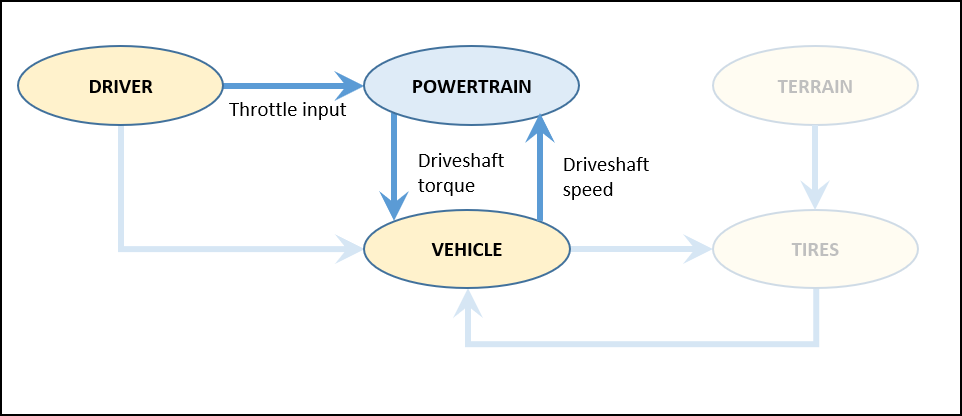
Chrono::Vehicle is designed to permit linking to a third-party powertrain model. Interfacing to such an external powertrain model requires two thin interface classes, derived from ChEngine and ChTransmission.
Chrono::Vehicle provides several templates for the powertrain system, described below.
Shafts-based powertrain model
This powertrain model is based on various Chrono 1-D shaft elements (ChShaft) and specialized shaft connection elements. Such elements are used to model:
- the engine (ChShaftsThermalEngine), specified through speed-torque curves
- the torque converter (ChShaftsTorqueConverter), specified through curves for the capacity factor as function of the speed ratio and the torque ratio as function of the speed ratio
- the gear box (manual or automatic, with an arbitrary number of forward gears and a reverse gear)
The motor block is attached to the chassis through a special Chrono constraint (ChShaftBodyRotation) thus permitting simulating motor torque effects on the chassis.
See ChEngineShafts, ChAutomaticTransmissionShafts, and ChManualTransmissionShafts
The image below shows the shafts-based powertrain model connected to a shafts-based wheeled vehicle model.
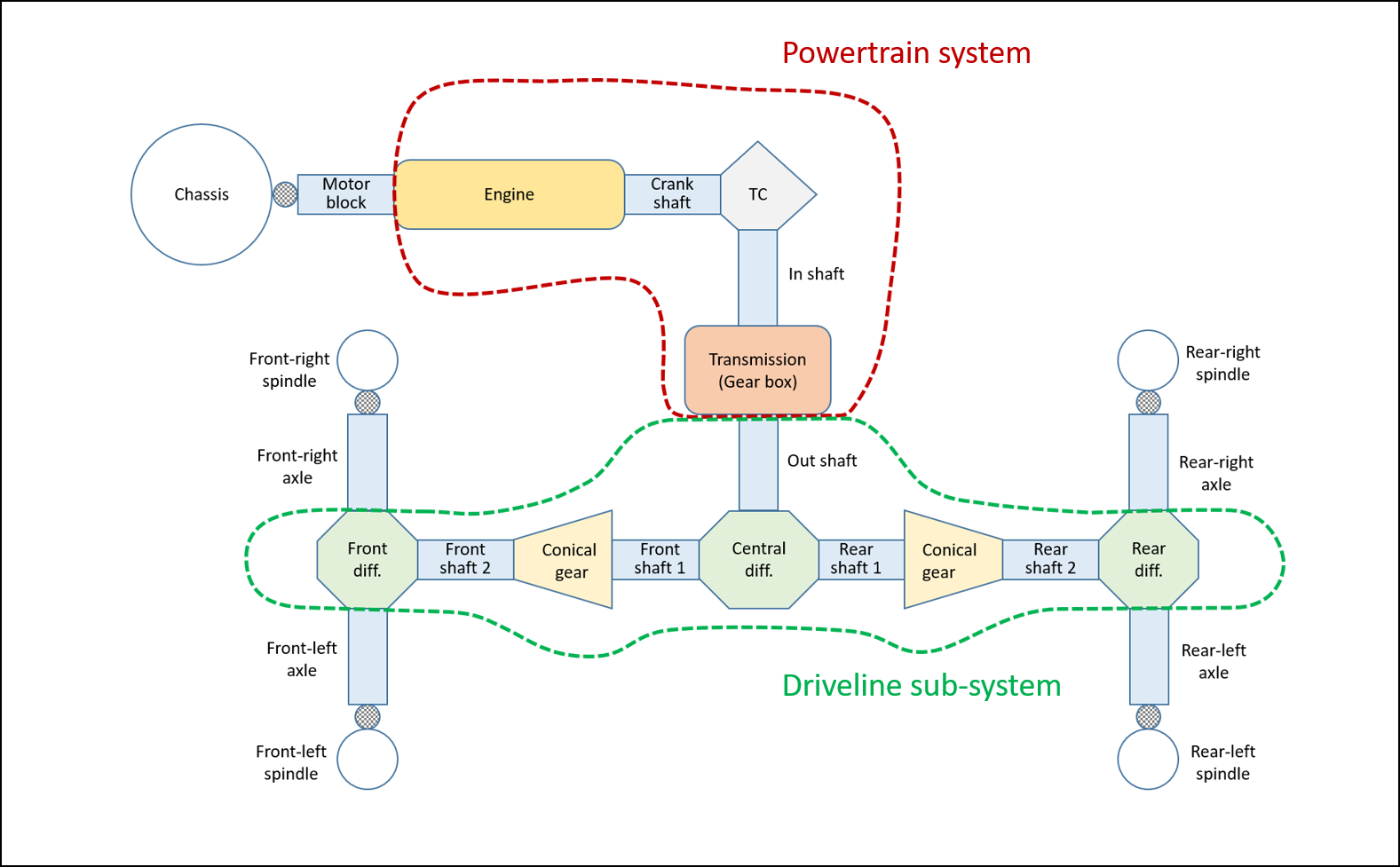
Sample JSON files with the specification of a shafts-based powertrain, illustrating the various template parameters, are provided below:
The curves encoded in the above JSON file are shown below.
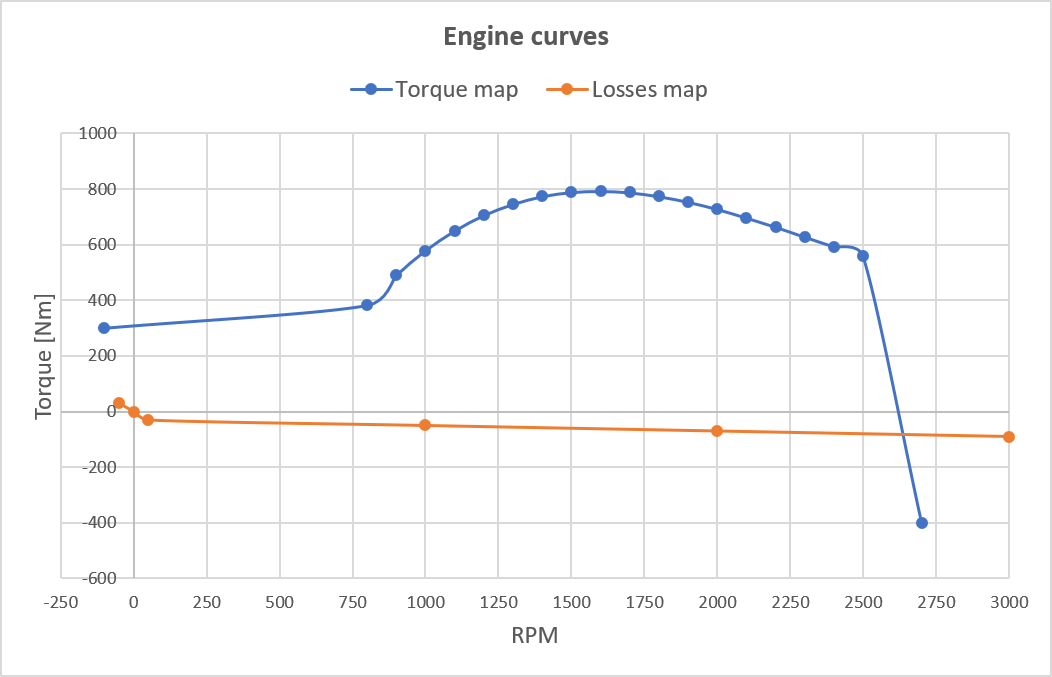
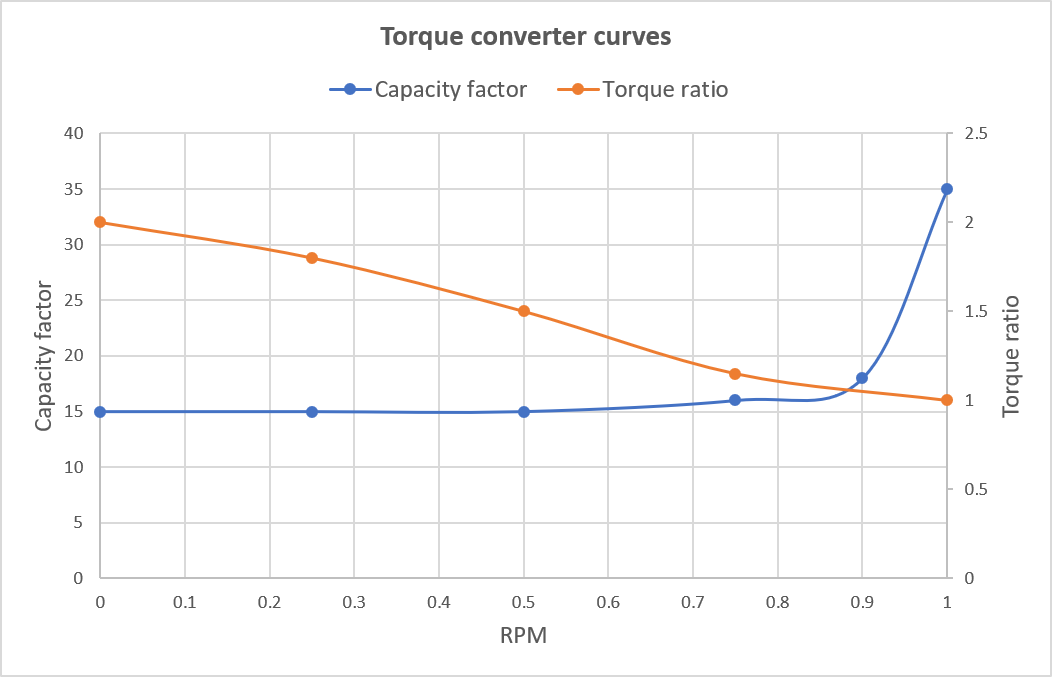
Engine map model
This template for a simple powertrain model is based on speed-torque engine maps. The model has no torque converter and can have either a manual or an automatic transmission. It accepts a single reverse gear and any number of forward gears. In automatic mode, gear shifting is done based on specified ideal shift points.
See ChEngineSimpleMap and ChAutomaticTransmissionSimpleMap.
Sample JSON files with the specification of a map powertrain, illustrating the various template parameters, are provided below.
The curves encoded in the above JSON file are shown below.
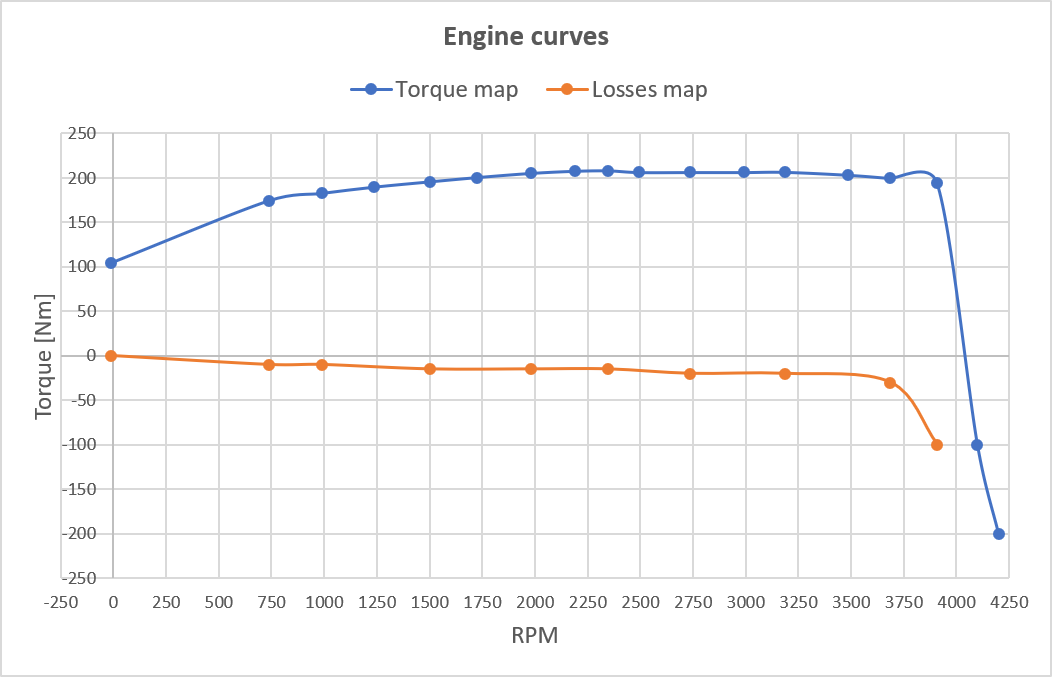
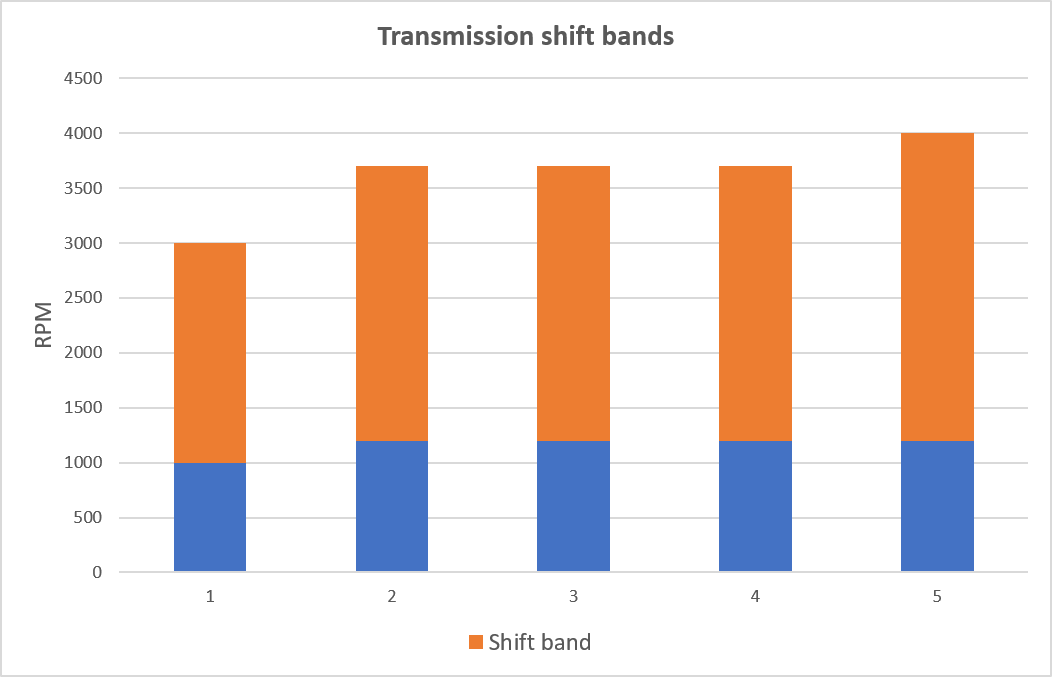
Simple powertrain model
This model uses a trivial speed-torque dependency, has no torque converter and no transmission box.
See ChEngineSimple and EngineSimple.
A sample JSON file with the specification of a CVT-like powertrain, illustrating the various template parameters, is provided below.
